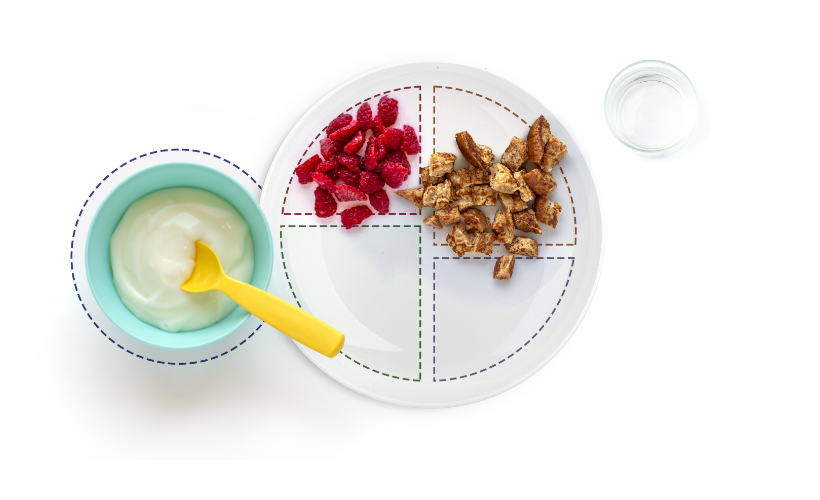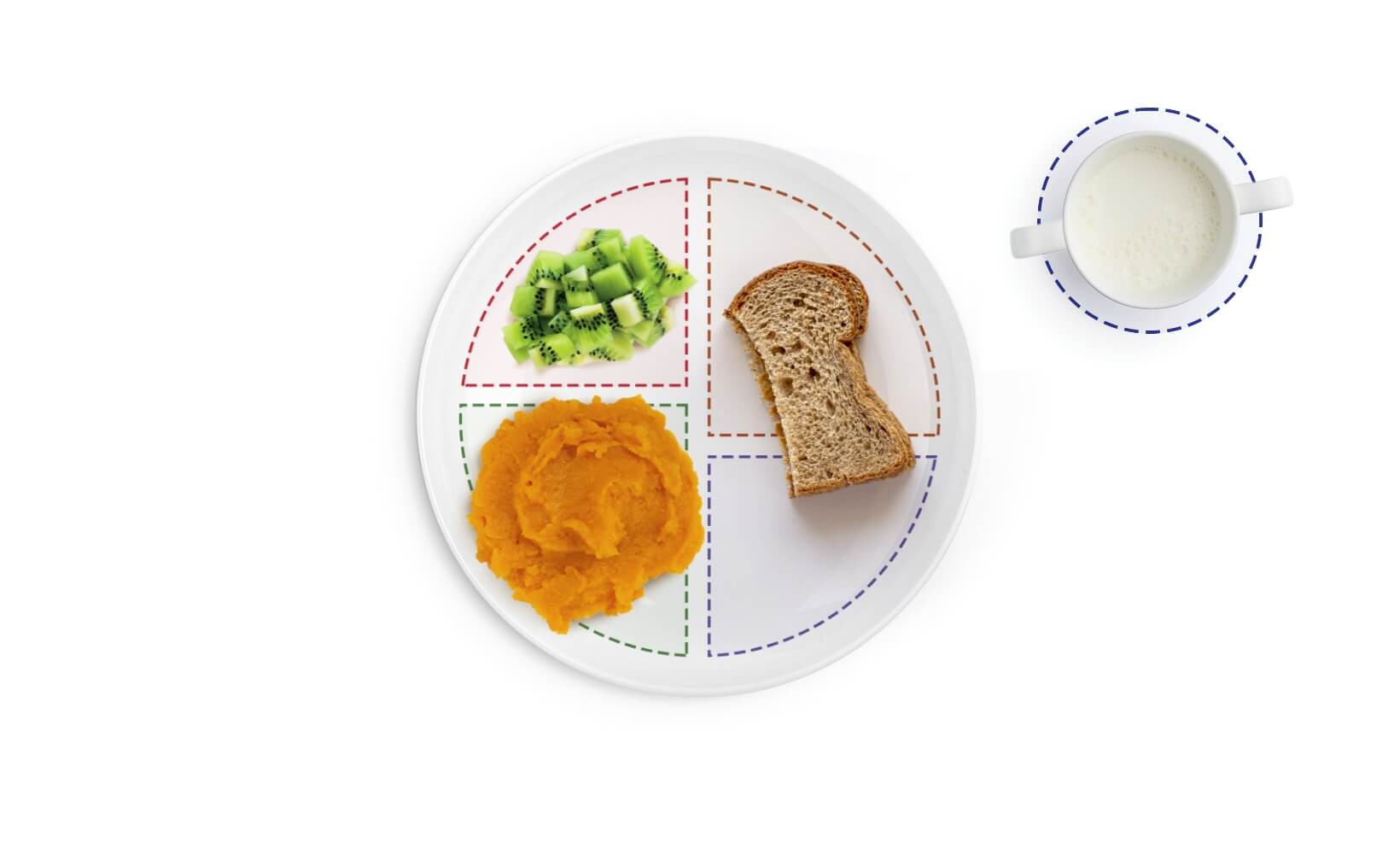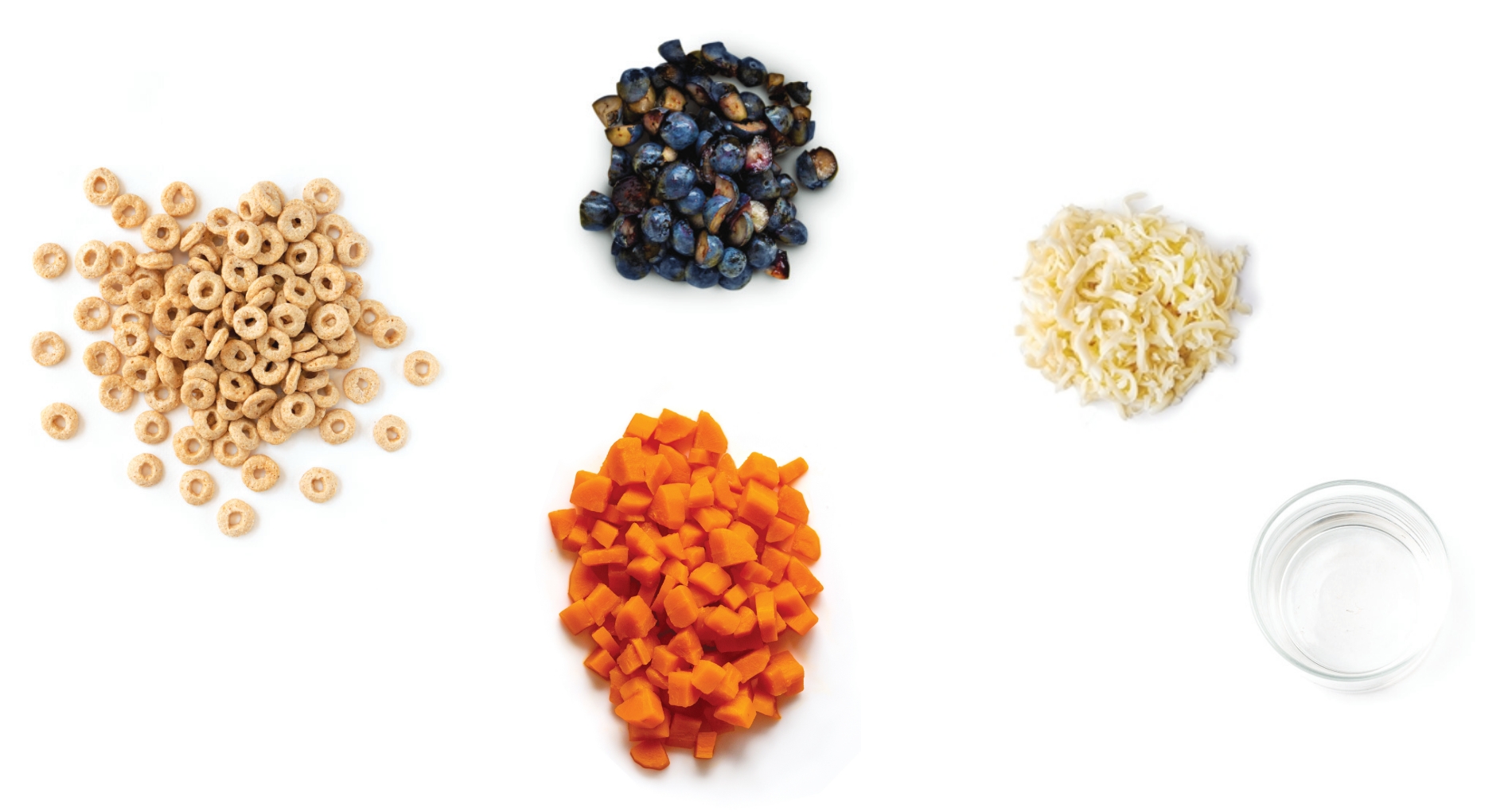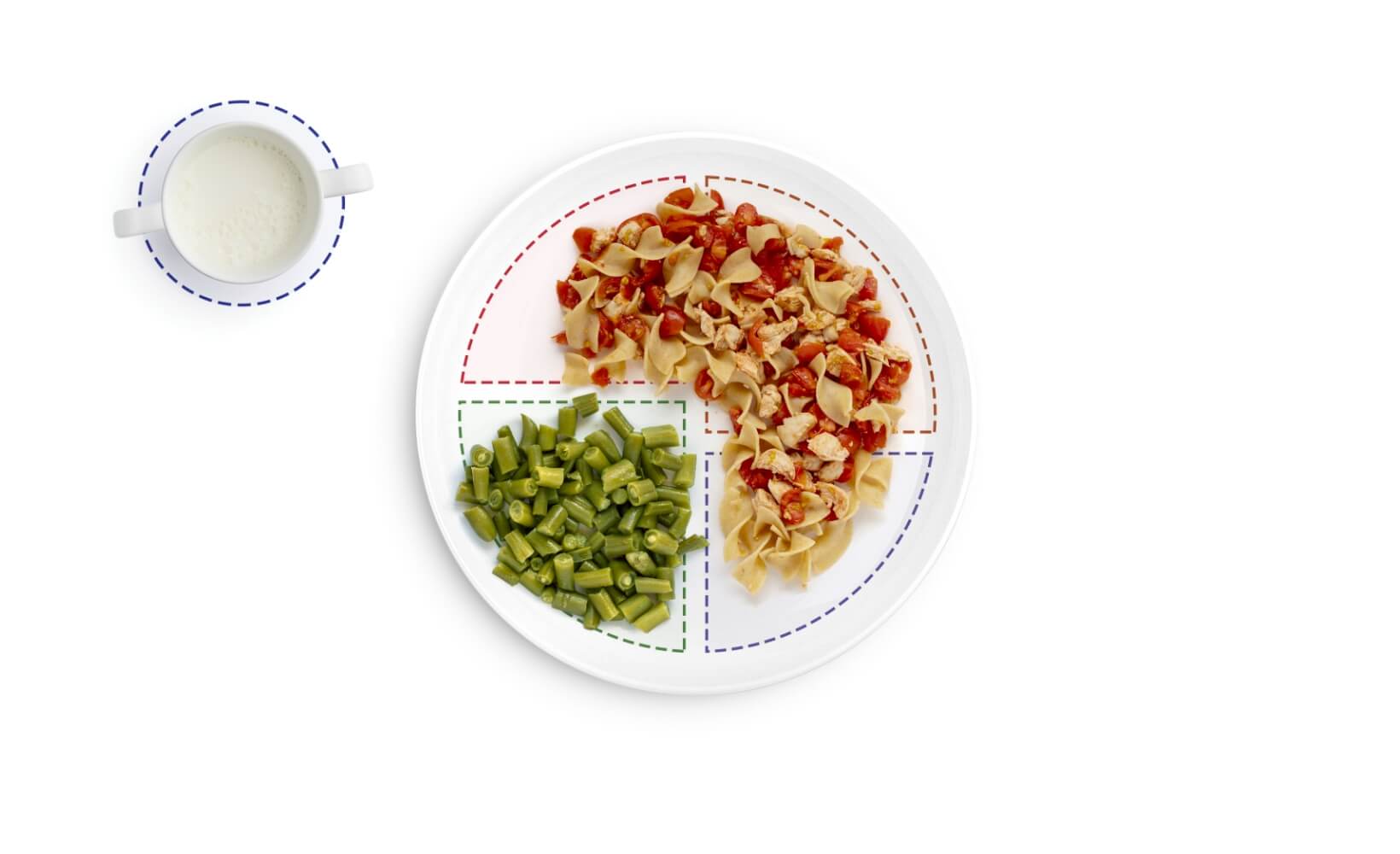



2 servings a day
1 serving = ½ cup
(1 cup total)
Cooked or soft, raw fruit.
Mashed, sliced, or chopped.
Offer a variety: red, yellow, orange, blue, and green.
3 servings a day
1 serving = ½ cup
(1½ cups total)
Raw or cooked, mashed, sliced, or chopped veggies.
Offer a variety: dark green, orange, red, yellow, and purple.
6 servings a day
1 serving = ½ ounce
(3 ounces total)
Whole grain bread, tortillas, rice, or noodles.
Dry or cooked cereal.
2 servings a day
1 serving = 1 ounce
(2 ounces total)
Cooked, chopped meat, poultry, or fish.
1 egg.
¼ cup cooked beans, peas, or tofu.
1 tablespoon of peanut butter.
4 servings a day
1 serving = ½ cup
(2 cups total)
Low-fat milk.
Yogurt.
1 inch cube or 2 tablespoons shredded cheese.

Now that I am 2 years old, it’s time for me to switch to low-fat milk, cheese, and yogurt.
I’m still learning to chew food properly. Please DON’T give me foods I could choke on like whole nuts, whole grapes, seeds, hot dogs, or hard candies, and sit with me while I eat.
Help me brush my teeth at least twice a day with a small, soft toothbrush and smear of toothpaste.
Be with me during screen time and interact with me. Remember, to schedule plenty of non-screen time into my day.
Side-Lying Hold
This hold is useful when:
Cross-Cradle Hold
This hold is useful when:
Clutch or “Football” Hold
This hold is useful when:
Cradle Hold
This hold is useful when:
Laid-Back Hold
This hold is useful when: